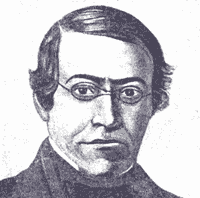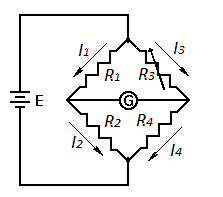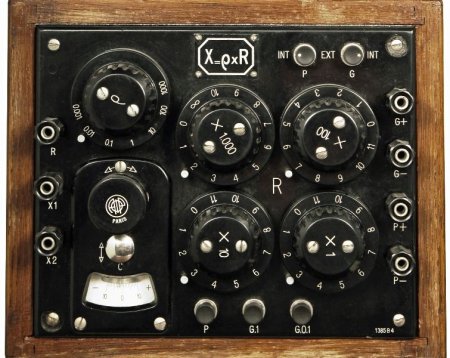Wheatstone measuring bridge and its use
One of the most popular bridge circuits, still used today in measuring instruments and in electrical laboratories, is the Wheatstone measuring bridge, named after the English inventor Charles Wheatstone, who proposed this scheme for measuring resistance as early as 1843.

The Wheatstone measuring bridge is essentially an electrical analogue of the pharmaceutical beam balance, as a similar method of compensation measurement is used here.
The principle of operation of the measuring bridge is based on the equalization of the potentials of the middle terminals of two resistor branches connected in parallel, each branch has two resistors. As part of one of the branches, a resistor whose value you want to know is included, and in the other - a resistor with an adjustable resistance (rheostat or potentiometer).
By smoothly varying the resistance value of the adjustable resistor, a zero reading is obtained on the scale of the galvanometer included in the diagonal between the midpoints of the two branches mentioned.In conditions where the galvanometer reads zero, the potentials of the midpoints will be equal and therefore the desired resistance can be easily calculated.

It is clear that in addition to resistors and a galvanometer, the circuit must have a supply for the bridge, in the figure it is shown as galvanic cell E. The current flows from the positive to the negative, while dividing between the two branches in inverse proportion to their resistances.
If the upper and lower resistors in the arm of the bridge are the same in pairs, that is, when the arms are exactly the same, there is no reason for the current to appear across the diagonal, since the potential difference between the connection points of the galvanometer is zero. In this case, the bridge is said to be balanced or balanced.
If the upper resistors are the same and the lower resistors are not, the current will flow diagonally, from the arm of higher resistance to the arm of lower resistance, and the needle of the galvanometer will deflect in the appropriate direction.


So, if the potentials of the points to which the galvanometer is connected are equal, then the ratios of the values of the upper and lower resistors in the arms will be equal to each other. Thus, equating these relations, we obtain an equation with one unknown. The resistances R1, R2 and R3 should be measured with high accuracy initially, then the accuracy of finding the resistor Rx (R4) will be high.
The Wheatstone bridge circuit is often used to measure temperature when one of the bridge branches turns on resistance thermometer as an unknown resistor.In any case, the greater the difference in resistances in the branches, the greater the current through the diagonal will be, and when the resistance changes, the diagonal current will also change.
This property of the Wheatstone bridge is so valued by those who solve control and measurement problems and develop control and automation schemes. The slightest change in resistance in one of the branches causes a change in the current through the bridge, and this change is recorded. Instead of a galvanometer, an ammeter or voltmeter may be included in the diagonal of the bridge, depending on the particular circuit and the purpose of the study.
In general, using the Wheatstone bridge, you can measure various quantities: elastic deformation, illumination, humidity, heat capacity, etc. it is enough just to include the corresponding sensor in the circuit instead of the measured resistor, the sensitive element of which will be able to change the resistance is consistent with the change in measured value, even if it is not electrical. Usually in such cases a Wheatstone bridge is connected through ADC, and further processing of the signal, display of information on the display, actions based on the received data — all this remains a matter of technology.

